Just before break, I heard a student tell a classmate, “You need to touch grass during break. Get in touch with reality.” As a person with Italian ancestry on my mother’s side, I discovered that visiting Rome was my own touching grass during break. So now I am exploring the many ways of getting in touch with reality that Rome and Italy offer. I’m not just touching grass, I’m grounding myself in my heritage.
In the Capitoline Museum, I realized that Romans—however magnificent Rome became—clung to their authenticity and roots. In numerous displays the Capitoline reminds us that a humble village once stood there. We gazed at marble portrait busts and statues of deities, so many of which did not idealize their subjects, but revealed them in all their irregular and soulful selfhood, beautiful not despite the truth but because of it. All were people you could know and love. The artists kept their vision of their fellow Romans real.
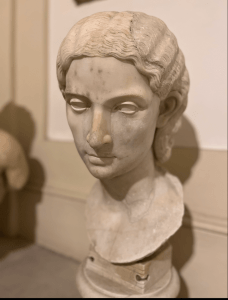
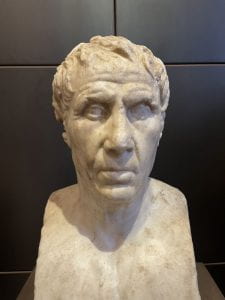
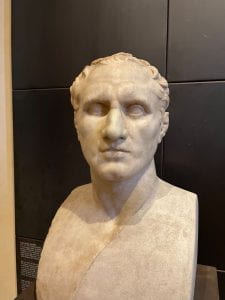
At the Capitoline and at the Vatican, we also saw human-sized dog statues, the scale of which underscores the huge role these attentive friends played and play in ancient Roman and modern human lives. Canines distract us from our stresses, and they ground us with long walks and joyful play. In addition, it’s humbling to try to live up to canine standards of devotion. Both Roman sculptors then and Roman dog owners now stay grounded because of their dogs.
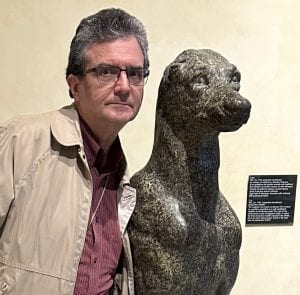
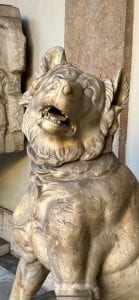
Romans, in fact, have valued canine grounding since at least the second or third century, when they began to tell their city’s origin story–one that features brothers Romulus and Remus, who were saved and nursed by a wolf.
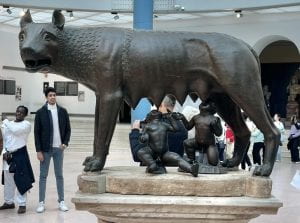
Of course, the work of all these ancient artists is on display in a surprisingly modern city. In fact, look anywhere and you will see technology coexisting with ancient architecture both ruined and and still in service. The other evening, several of us realized that on streets many hundreds of years old, many of the cabs that passed us were silent and utterly odor-free because they were electric. Rome has technology, but it remains in touch with its heritage as a village on a hill.
One night, we dined at a restaurant honoring its Roman roots with plain stoneware plates and cups and simple recipes that let the ingredients shine through—such as grilled eggplant layered with arugula, mozzarella, and parmesan–graced with a touch of garlic and olive oil. Roman restauranteurs use the adjective “rustico” to describe such recipes. Interestingly, our waiter warned us that Milan is not like Rome. A Roman by choice, not birth, he regards Milan as too quick to tear down the very past that Rome preserves. I guess we’ll have to see whether Milan touches grass or not!
On the second day of this trip, we wandered out of an ancient Mithraic temple below the church of San Clemente and into an ancient Roman residence with its own spring. That evening, we saw an elaborate fountain designed by Bernini. As the days have rolled by, we have remarked on numerous modest fountains suitable for filling water-bottles. And we have repeatedly marveled at the urban parklands and the elegant umbrella pines and cypresses.
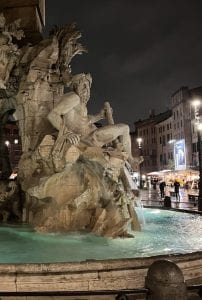
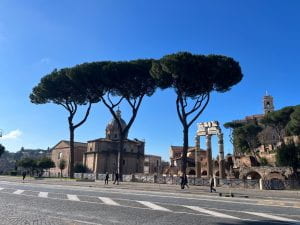
Typing right now in Florence, I find myself thinking that since the time of the aqueducts, much of Rome’s greatness has stood and stands on the attention of Romans to basic things . . . things that ground us: good food, clean water, connection to nature, dogs, an empathetic appreciation of what it means to be human, an abiding connection with the past, and most of all, keeping it real.
On this trip, I awaken each day to the reality that for years I have not adequately appreciated either my own roots in this wonderful country or what Italy has to offer. Hereafter, I commit myself to connecting with the legacy I am experiencing and to touching grass every day . . . which is why I am ending this blog post!
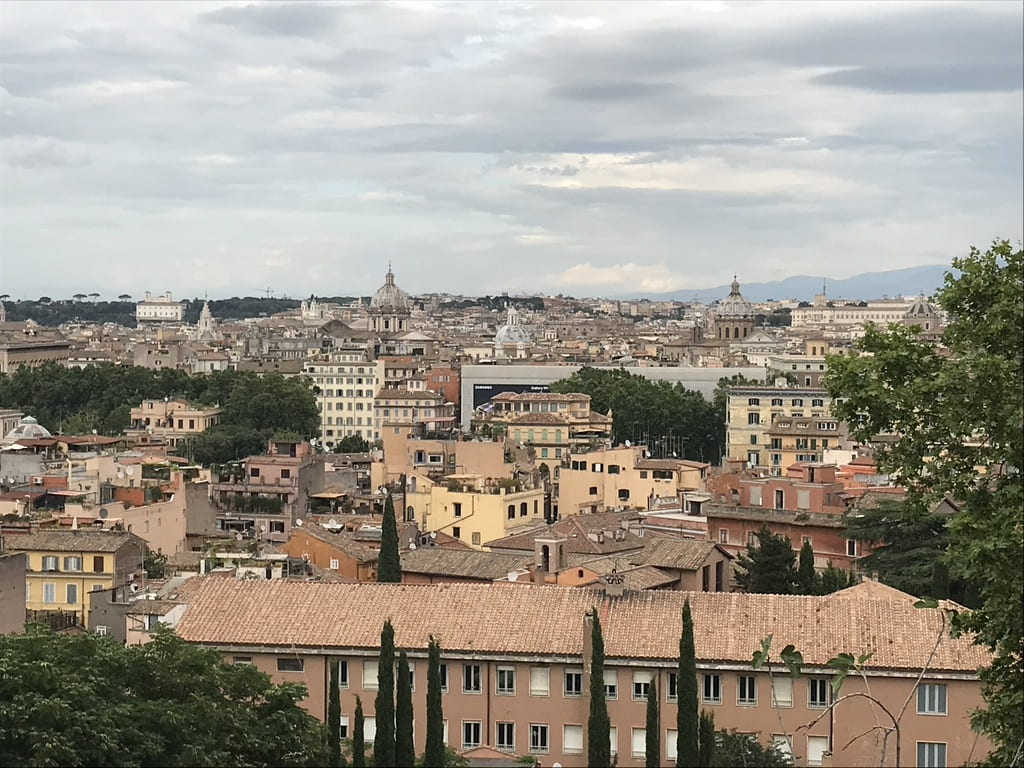
Doc Rob. Wonderful to hear this trip is drawing you closer to your family roots. It’s quite a marvelous moment when one can connect with their ancestral homeland in some manner. It’s a delight to know how far we have come and this progress allows us to move forward full of hope and expectations.